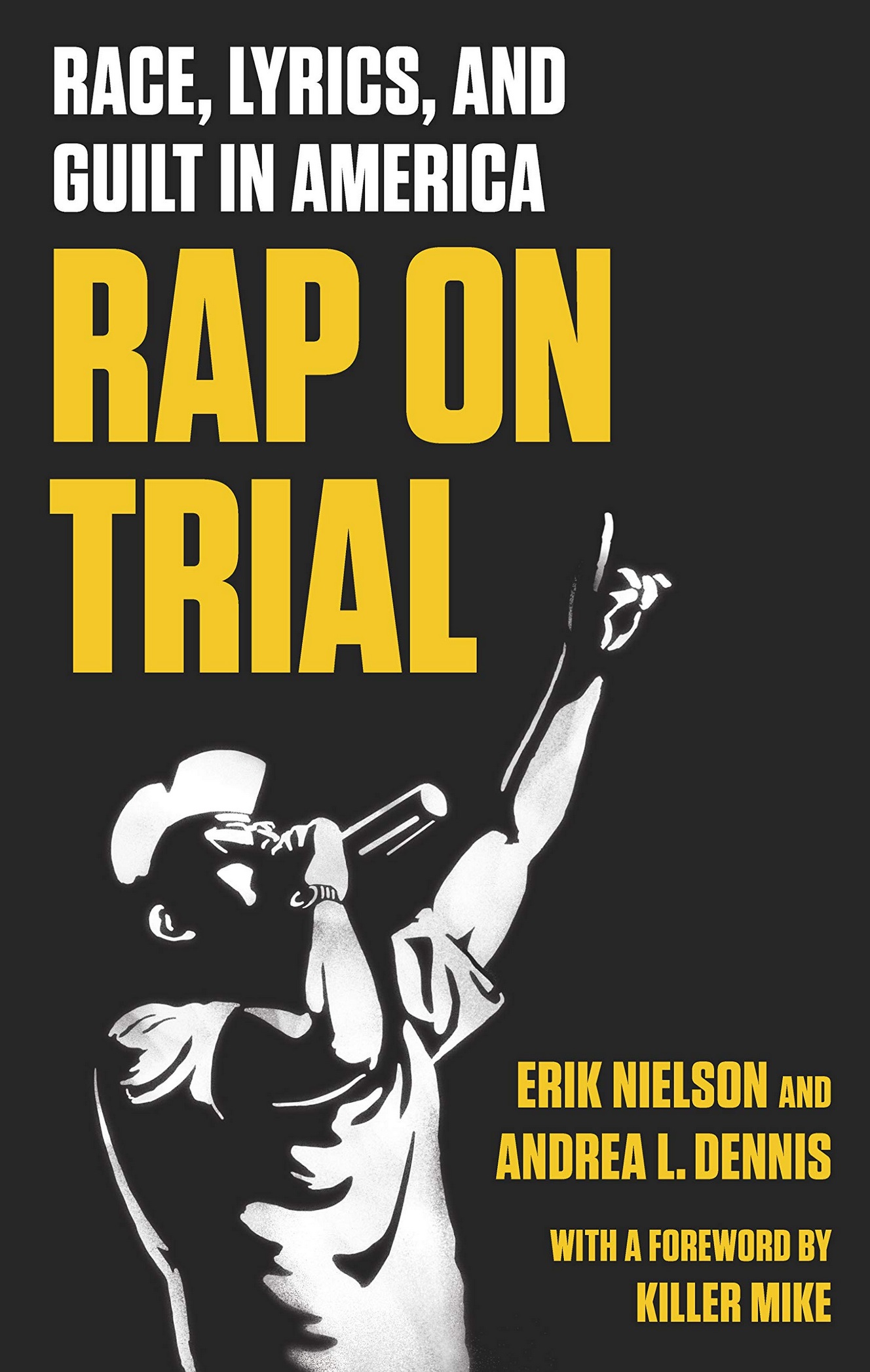BOOK REVIEW: How Prosecutors are Using Rap Music Against Black Defendants
/Rap on Trial: Race, Lyrics, and Guilt in America by Erik Nielson and Andrea L. Dennis
The New Press, 224 pp.
By Lauren-Brooke Eisen
First time I shot her
I shot her in the side
Hard to watch her suffer
But with the second shot she died
Delia's gone, one more round
Delia's gone
These words are from a Johnny Cash song called “Delia’s Gone,” which peaked at #66 on the Billboard chart in August 1962. The story of Delia Green’s murder has been lyricized dozens upon dozens of times since the 14-year old from Savannah, Georgia, was shot in 1900. The murder, and the subsequent trial of Moses Houston, a 15-year-old who allegedly had a sexual relationship with Delia, inspired countless folk songs over the next century.
Johnny Cash’s song, a first-person confessional, generated little controversy when it came out. Yet only a few decades later, when rap songs delved into similar territory, they were criticized to the point of being criminalized. In their new book, Rap on Trial: Race, Lyrics, and Guilt in America, University of Richmond Professor Erik Nielson and University of Georgia School of Law Professor Andrea L. Dennis argue that the criminal justice system has long criminalized rap music, thereby penalizing black music artists. They point to a dearth of examples in which country music, whether by Mr. Cash, “…or anyone else, has been used in a criminal trial the way rap is.”
The authors have identified at least 500 criminal trials over the last 10 years in which prosecutors introduced rap lyrics as evidence. The authors present reams of data showing that no other type of music has made its way into the American courtroom as evidence of criminal wrongdoing in the same way rap music has. This has had a ruinous impact on Black men who write, listen to, or sing rap lyrics. “Rather than acknowledging that these lyrics are the result of creative license, the criminal justice system has effectively denied rap music the status of art,” the authors write. This, they add, allows “police and prosecutors to present it to juries as autobiography rhymed over a beat – often with devastating consequences.”
Rap on Trial illustrates how many Black and Latino men are consistently denied a fair trial because prosecutors are introducing rap lyrics as evidence of motive and intent, threats, or, in the authors’ words, “rhymed confessions.” This has many dangers. The authors argue that this framework dehumanizes Black and Latino men, who are already overrepresented in U.S. prisons — in 2017, Black people represented 12 percent of the U.S. adult population but 33 percent of the sentenced prison population; Latinos represented 16 percent of the adult population and 23 percent of the sentenced prison population. At the same time, introducing these lyrics at trial can intimidate and stifle artists who express themselves through rap music.
Nielson and Dennis provide an illuminating history of the genre, from hip-hop’s emergence in the mid-1970s to rap music’s rise in the 1980s and 1990s. They describe the complex rules of rap, such as the emphasis on four beats, and “its emphasis on rhymes and beats, its sophisticated wordplay, its use of exaggeration, and its reliance on repetition.” Precisely because prosecutors, judges, and often juries don’t understand the art form, its introduction at trial can sway actors in the system who may not realize that the lyrics are exaggerated, and that words are often chosen precisely because they rhyme. Summing up prosecutorial and judicial gaps in their knowledge of rap music, the authors quote a 2017 tweet by David Simon, a former police reporter and creator of The Wire who was irritated that prosecutors in Baltimore introduced rap music as evidence in a criminal case: “In all my years covering crime, I never met a federal prosecutor who didn’t clap on the one and the three. Fuck their music criticism.”
Nielson and Dennis point to a 1994 decision in California, People v. Olguin, which established that lyrics mentioning gangs and related violence could be used in court to prove criminal intent or association with a gang. Since then, prosecutors have used rap lyrics to argue that defendants are violent, have bad or dangerous character traits, and are likely to commit crimes. Despite hip hop music’s wide appeal, the authors found that only about two percent of the cases in which prosecutors used rap music during a trial involved white defendants, and only five cases involved female defendants.
Some of the most interesting research Nielson and Dennis present was conducted by social psychologist Carrie Fried. In one study, Fried played a folk/pop song whose lyrics described shooting a deputy. She told one group that the words came from a rap song and the other group that they came from a country song. Fried reported that subjects found the same lyrical passage that was “acceptable as a country song [was] dangerous and offensive when identified as a rap song.” Given what we already know about the vast over-policing of Black communities, the massive racial disparities that exist in our prison system, and the way that mass incarceration tears apart neighborhoods, these findings should provide powerful and compelling affirmation to judges across the country that rap lyrics are inherently prejudicial when introduced as evidence.
Ultimately, the book makes a persuasive argument that rap lyric evidence should be excluded in criminal trials because it is unfairly prejudicial. The authors suggest “rap shield rules” that would “ban the use of rap lyrics, videos, or promotional materials as evidence in criminal proceedings.” They also recommend that judges receive training on the “history, artistry, and industry of rap music” and that judges should find their own expert witnesses to testify in these cases instead of relying on prosecutors’ suggested witnesses.
A thoroughly researched book and a riveting read, Rap on Trial sheds light on a highly damaging practice that has become an everyday occurrence in America’s courtrooms.










